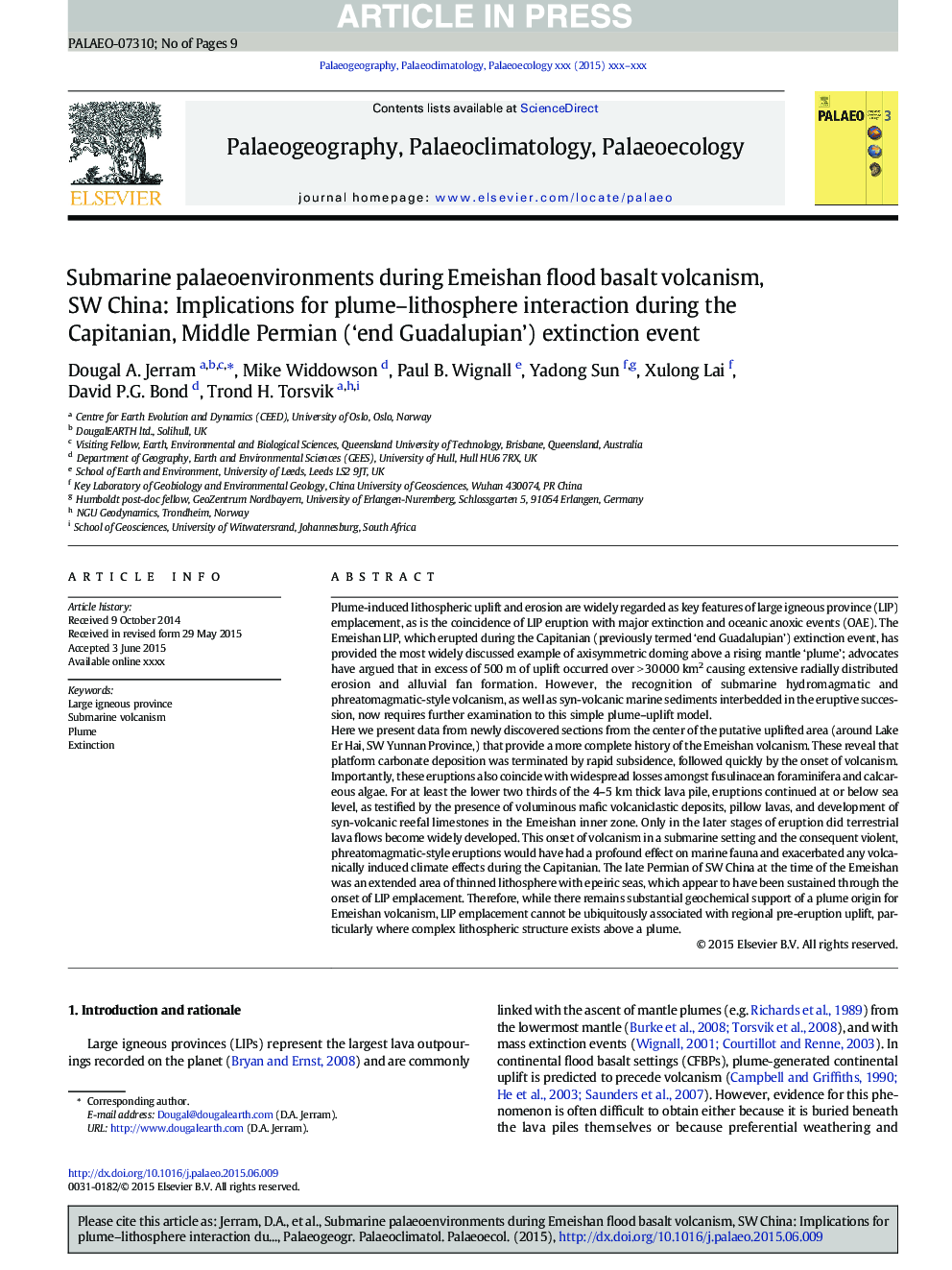| Article ID | Journal | Published Year | Pages | File Type |
|---|---|---|---|---|
| 6349270 | Palaeogeography, Palaeoclimatology, Palaeoecology | 2016 | 9 Pages |
Abstract
Here we present data from newly discovered sections from the center of the putative uplifted area (around Lake Er Hai, SW Yunnan Province,) that provide a more complete history of the Emeishan volcanism. These reveal that platform carbonate deposition was terminated by rapid subsidence, followed quickly by the onset of volcanism. Importantly, these eruptions also coincide with widespread losses amongst fusulinacean foraminifera and calcareous algae. For at least the lower two thirds of the 4-5Â km thick lava pile, eruptions continued at or below sea level, as testified by the presence of voluminous mafic volcaniclastic deposits, pillow lavas, and development of syn-volcanic reefal limestones in the Emeishan inner zone. Only in the later stages of eruption did terrestrial lava flows become widely developed. This onset of volcanism in a submarine setting and the consequent violent, phreatomagmatic-style eruptions would have had a profound effect on marine fauna and exacerbated any volcanically induced climate effects during the Capitanian. The late Permian of SW China at the time of the Emeishan was an extended area of thinned lithosphere with epeiric seas, which appear to have been sustained through the onset of LIP emplacement. Therefore, while there remains substantial geochemical support of a plume origin for Emeishan volcanism, LIP emplacement cannot be ubiquitously associated with regional pre-eruption uplift, particularly where complex lithospheric structure exists above a plume.
Related Topics
Physical Sciences and Engineering
Earth and Planetary Sciences
Earth-Surface Processes
Authors
Dougal A. Jerram, Mike Widdowson, Paul B. Wignall, Yadong Sun, Xulong Lai, David P.G. Bond, Trond H. Torsvik,
